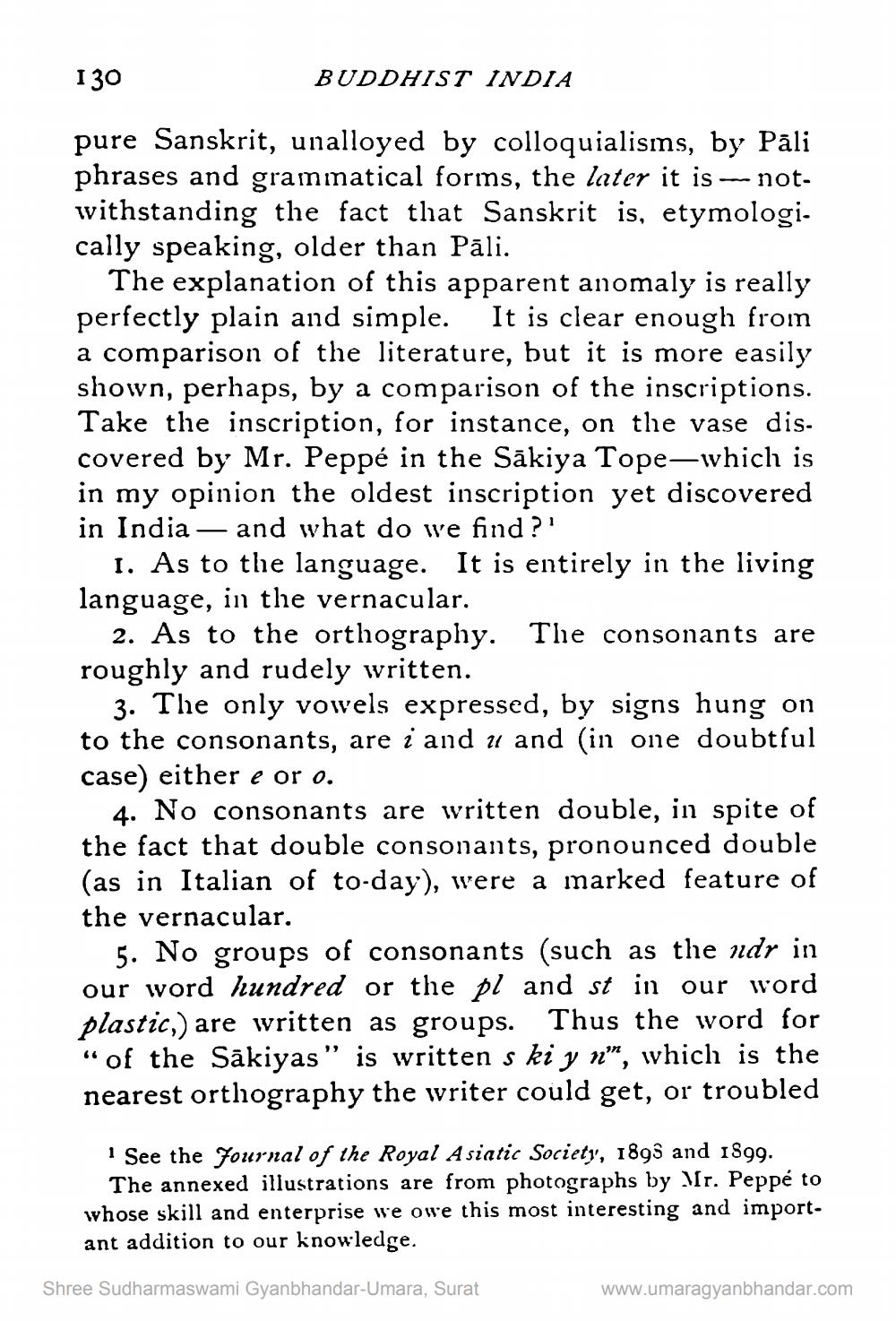________________
130
BUDDHIST INDIA
pure Sanskrit, unalloyed by colloquialisms, by Pāli phrases and grammatical forms, the later it is - notwithstanding the fact that Sanskrit is, etymologi. cally speaking, older than Pāli.
The explanation of this apparent anomaly is really perfectly plain and simple. It is clear enough from a comparison of the literature, but it is more easily shown, perhaps, by a comparison of the inscriptions. Take the inscription, for instance, on the vase discovered by Mr. Peppé in the Sākiya Tope—which is in my opinion the oldest inscription yet discovered in India — and what do we find ?'
1. As to the language. It is entirely in the living language, in the vernacular.
2. As to the orthography. The consonants are roughly and rudely written.
3. The only vowels expressed, by signs hung on to the consonants, are i and u and (in one doubtful case) either e or o.
4. No consonants are written double, in spite of the fact that double consonants, pronounced double (as in Italian of to-day), were a marked feature of the vernacular.
5. No groups of consonants (such as the ndr in our word hundred or the pl and st in our word plastic,) are written as groups. Thus the word for “ of the Sākiyas" is written s ki y 12"", which is the nearest orthography the writer could get, or troubled
See the Journal of the Royal Asiatic Society, 1893 and 1899. The annexed illustrations are from photographs by Vr. Peppé to whose skill and enterprise we owe this most interesting and important addition to our knowledge.
Shree Sudharmaswami Gyanbhandar-Umara, Surat
www.umaragyanbhandar.com




